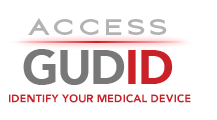SEARCH RESULTS FOR: (*bitcoin mining software tools馃挷itenthusiasts.com馃挷Crypto*)(3552 results)
1AXe Wearable Biosensor
Lifesignals, Inc.
UB1251
In Commercial Distribution
- B353UB12512 ()
- B353UB12511 ()
- B353UB12513 ()
- Electrocardiographic ambulatory recorder
Wearable Biosensor - ECG Remote Monitoring Biosensor
Lifesignals, Inc.
LP1251
In Commercial Distribution
- B353LP12511 ()
LP1251_US
- Electrocardiographic ambulatory recorder
Wearable Biosensor - ECG Remote Monitoring Biosensor Patch
Lifesignals, Inc.
LP1250
Not in Commercial Distribution
- B353LP12502 ()
- B353LP12501 ()
- B353LP12503 ()
- Electrocardiographic ambulatory recorder
Wearable Biosensor - ECG Remote Monitoring Biosensor
Lifesignals, Inc.
AB1257
Not in Commercial Distribution
- B353AB12572 ()
- B353AB12571 ()
- B353AB12573 ()
AB1257_US
- Electrocardiographic ambulatory recorder
Wearable Biosensor - ECG Remote Monitoring Biosensor
Lifesignals, Inc.
AB1251
Not in Commercial Distribution
- B353AB12512 ()
- B353AB12511 ()
- B353AB12513 ()
AB1251_US
- Electrocardiographic ambulatory recorder
Bolt EIA (refurbished)
Gold Standard Diagnostics Corporation
00500R
In Commercial Distribution
- B35000500R0 ()
00500R
- Enzyme immunoassay (EIA) analyser IVD
Bolt EIA
Gold Standard Diagnostics Corporation
00500
In Commercial Distribution
- B350005000 ()
00500
- Enzyme immunoassay (EIA) analyser IVD
ThunderBolt EIA (refurbished)
Gold Standard Diagnostics Corporation
00300R
In Commercial Distribution
- B35000300R0 ()
00300R
- Enzyme immunoassay (EIA) analyser IVD
No Description
Gold Standard Diagnostics Corporation
00300
In Commercial Distribution
- B350003000 ()
00300
- Enzyme immunoassay (EIA) analyser IVD
No Description
BRAEMAR MANUFACTURING, LLC
100-0046-02
In Commercial Distribution
- B146M10 ()
- Electrocardiographic ambulatory recorder

